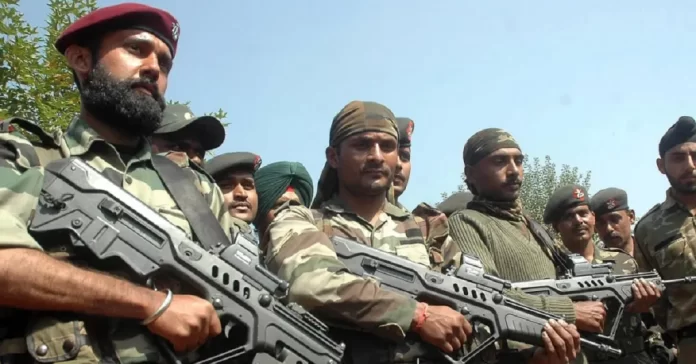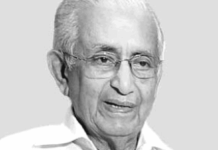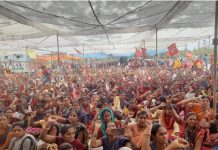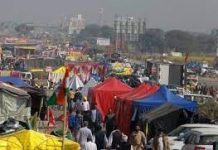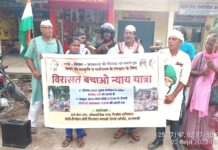The critics of AFSPA, and those making demands for its repeal, are aware of the extent and scope of the Act, and how this has destroyed lives of innocent civilians, often entire families, over the years. It is due to these abuses of power by the personnel of the armed forces who have largely avoided being held accountable for their inhuman acts, that the voices of dissent have again, resurfaced and grown stronger after the killing of 14 civilians by personnel of the 21 Para Special Force in Nagaland.
Here’s a closer look at the contentious Act, its provisions, why it is finally time to repeal it and whether there is political will for the same.
Where is AFSPA in operation?
When AFSPA was enacted in 1958, it was only in place in Assam and Manipur, to curb rebellion by Naga separatist groups. In 1972, it was extended to Meghalaya, Nagaland, Tripura, Mizoram and Arunachal Pradesh. The law became active in Assam, in 1990, the same year it was applied to Kashmir Valley. It was extended to Jammu province in 2001. However, the Ladakh region, which is now a separate Union territory was never under AFSPA.
AFSPA was in operation in Tripura for 18 years before it was withdrawn in 2015.In 2018, AFSPA was lifted from Meghalaya.
In October this year, AFSPA was extended to three districts of Arunachal Pradesh, namely, Tirap, Changlang and Longding and areas under Namsai and Mahadevpur police stations. The restrictions from Roing police station in Lower Dibang valley and Sunpura police station in Lohit district were lifted.
AFSPA continues to be applied to Manipur (excluding the Imphal Municipal Council area) and of course across Nagaland. In Assam, where the political party in power isa the same at the one at the Centre, AFSPA continues to be in operation cross the entire state, with the latest 6-month extension granted in August 2021.
Who holds the reins under AFSPA?
As per the Act, under section 3, the power to declare a State or Union territory as a “disturbed area” lies with the Governor of that State or the Administrator of that Union territory or the Central Government. This implies that while the state government may by itself make such declaration since it is aware of the situation on ground, the central government is also given complete power to do the same without having to consult with the state government that is governing that state. While the power that lies with the State government can still be validated under the federal system that we follow as per our Constitution, the absolute power on similar lines given to the Central government clearly allows intrusion of the Union government into the internal affairs of a State.
In Naga People’s Movement of Human Rights v Union of India, (1998) 2 SCC 109the Supreme Court had also said, that even if section 3 does not provide for it, “It is, therefore, desirable that the State Government should be consulted and its co-operation sought while making a declaration (by the Central government).”
Even for institution of any legal proceeding against any person (read armed forces personnel) the sanction of only the central government needs to be sought, even though it is the state’s resident that might have been affected by the acts of those armed forces personnel.
The Ministry of Defence and the Ministry of Home Affairs have stated in replies to Right to Information (RTI) requests from human rights activists in J&K that no sanction has been granted between 1990 and 2012 by either ministry.[1]
Has AFSPA been readily accepted in any state?
After the deadly attack on innocent civilians on December 4 in Nagaland, the state cabinet has taken up the cudgels to oppose AFSPA and call for its repeal, however the other sates in the region are also echoing the same demand.
Meghalaya Chief Minister Conrad Sangma also called for repeal of AFSPA, while Meghalaya was able to rid itself of the law in 2018.
Assam has readily accepted and keeps extending AFSPA, the main reason for its support is that the same party that is in power at the Centre, is also in power in the state.
In 1990, it was applied to Kashmir Valley and in 2001 it was extended to Jammu province as well. Outlookhas reported that till July 2018, when Chief Minister Mehbooba Mufti’s government was in power, the erstwhile state’s successive governmentshad sent just 50 cases for prosecution sanction against the armed forces personnel under AFSPA, 1990. However, the Union government denied the permission in all the cases. Since the abrogation of Article 370, no such cases have been sent for Centre’s sanction. During his six-year tenure, 2009-2014, former chief minister Omar Abdullah constantly demanded the gradual withdrawal of the AFSPA from “peaceful areas” of Jammu and Kashmir. The Army has however, expressed its disapproval for any calls for repeal of AFSPA. The Army said those demanding withdrawal of the AFSPA were coming from Pakistan, the ISI, militants and secessionists. The Army in November 2011 argued, “The Country could be compelled to grant the State independence by 2016 if government plans to lift AFPSA from some areas.”
“In the case of Nagaland at least an FIR was registered. The Home Minister took notice of it. In the case of Jammu and Kashmir, they don’t even give bodies back. In the Hyderpora case, three persons were killed and they didn’t even return bodies. We want AFSPA to be vacated not only from Nagaland but from J&K so that incidents like Hyderpora can be prevented,” says Mehbooba Mufti, former Chief Minister of the erstwhile state of J&K.
For Nagaland, AFSPA has been extended until December 31 and it is to be seen what the repercussions will be, if the Centre does not accede to the demands torepeal AFSPA.
Which sections of the law give the armed forces unbridled powers?
The intention of the Act is to help a “disturbed area” wherethe ground level situation is so dangerous that the use of armed forces in aid of the civilians is necessary. It is through use of this rationale that a state government or the central government is supposed to apply AFSPA in that part of the state or the whole state or UT, as the case may be.
However, there is no set timeframe that limits the duration for which a region or state may be declared as “disturbed area” and resultantly, most of the north eastern states have perpetually been under AFSPA; while only being subjected to periodical reviews which are nothing but mechanical declarations every six months in the government gazette.
Under section 4 of AFSPA, an officer of the armed forces can fire upon or use force upon any person “acting in contravention of any law or order for the time being in force in the disturbed area”, “after giving such due warning as he may consider necessary.”
Under section 4(a), the personnel can even prohibit assembly of five or more persons and can prohibit carrying of “things capable of being used as weapons.”
The personnel can even destroy any “shelter” or fortified position from where armed attacks are likely to be made.[Section 4(b)]
Further, they can arrest, without warrant, any person against whom there is suspicion that he has or he might commit a cognisable offence and is also allowed to use force to make such an arrest.[Section 4 (c)]
They also have the power to enter and search without warrant, under section 4(d), any premises and may use force for that purpose. They are required to hand over such arrested persons to the nearest police station but not within a stipulated time line only “with the least possible delay”, under section 5.
The powers are unbridled on the face of it, but the armed forces are furthermore protected under section 6 where the Act provides that no prosecution, suit or other legal proceeding shall be instituted, except with the previous sanction of the Central Government, against any person acting under the Act.
When has AFSPA been brought into question before?
While the demand for repeal of AFSPA has been consistent, it gains traction every time such big incidents take place.
Justice C Upendra, the Commissioner appointed by the Manipur Government to enquire into the killing of a young woman, Amina Devi, in April 1996, articulated this in his report: If the person(s) responsible for indiscriminate firing resulting to the loss of the life of innocent people on mere pretext of self-defenceor for apprehending a person or persons suspected to be extremists are left scot-free, this would amount to anarchy.[2]
When hearing India’s second report on its adherence to the ICCPR, the United Nations Human Rights Committee held that the Armed Forces (Special Powers) Act (and other special legislation in force in India) effectively derogated from the right to life and other rights in the covenant.[3]
AFSPA in the Court
In the well-known Pathribal encounter case the Army had killed five civilians in Kashmir in extra-judicial killing (read “fake encounter”) and passed them off as foreign militants. In 2007, the CBI filed a chargesheet in the case, which the Army challenged on lack of sanction. Five years later, in 2012, the Supreme Court allowed the Army to choose between court martial or criminal proceedings against the accused. Naturally, they chose the former. In January 2014, the Army in its verdict said evidence recorded could not establish a prima facie case against any of the accused.
The constitutionality of the Act has been challenged in the Naga People’s Movement of Human Rightscase in 1998. The court however refused to observe that AFSPA was akin to declaration of emergency in the state and also that the Act conferred arbitrary or unguided powers of declaring an area as “disturbed area”. The court had however, directed that the declaration can/should be made for limited periods and has to be reviewed every six months.
The Judgement further held that “Although a declaration under Section 3 can be made by the Central Government suo moto without consulting the concerned State Government, but it is desirable that the State Government should be consulted by the Central Government while making the declaration.” However, no legislative changes were made to lend statutory weight to this judicial directive. The court also did not deemfit to accept that the conferment of power to make a declaration under Section 3 on the Central Government was violative of the federal scheme asenvisaged by the Constitution.
Is application of AFSPA truly justified?
The cases of withdrawal of AFSPA from states of Tripura, Mizoram and Meghalaya are good case studies to show that once levels of insurgency are curbed, a strong case for withdrawal is made. These states have been managing well without it. Even Punjab, which was under AFSPA between 1983 and 1997 was taken off its radar as internal aggression ended.
The need for AFSPA in Assam also does not arise since there are no activities from ULFA or the Bodo rebellion. Even in Nagaland, dominant rebel tribes accepted the Indian Constitution, signed up for peace, and joined the mainstream following the Shillong Peace Accord of 1975. Even NSCN (I-M), which used to fight guerilla, signed a ceasefire accord in 1997. Thus the threat is minimal and does not warrant the state to be under AFSPA.
Is there a lack of political will for a repeal of AFSPA?
Amidst itinerant calls for the repeal of AFSPA, governments at the centre balk from a repeal of this regressive legislation. Today, it is unlikely that the hardline BJP regime at the Centrewill even respond to calls for a repeal. It is noteworthy that even UPA I nor UPA II, led by the Congress, relented to such consistent demands when they were in power. This was despite the 2005 Justice Jeevan Reddy Committee report on the question. In 2021 India, a government unwilling for any debate or dialogue – though it was compelled to bend to the sustained protest by farmers that lasted a year since November 2020 – is unlikely to concede this demand. A gradual withdrawal from peaceful areas may still be a first step.
courtesy : cjp.org.in
Discover more from समता मार्ग
Subscribe to get the latest posts sent to your email.

